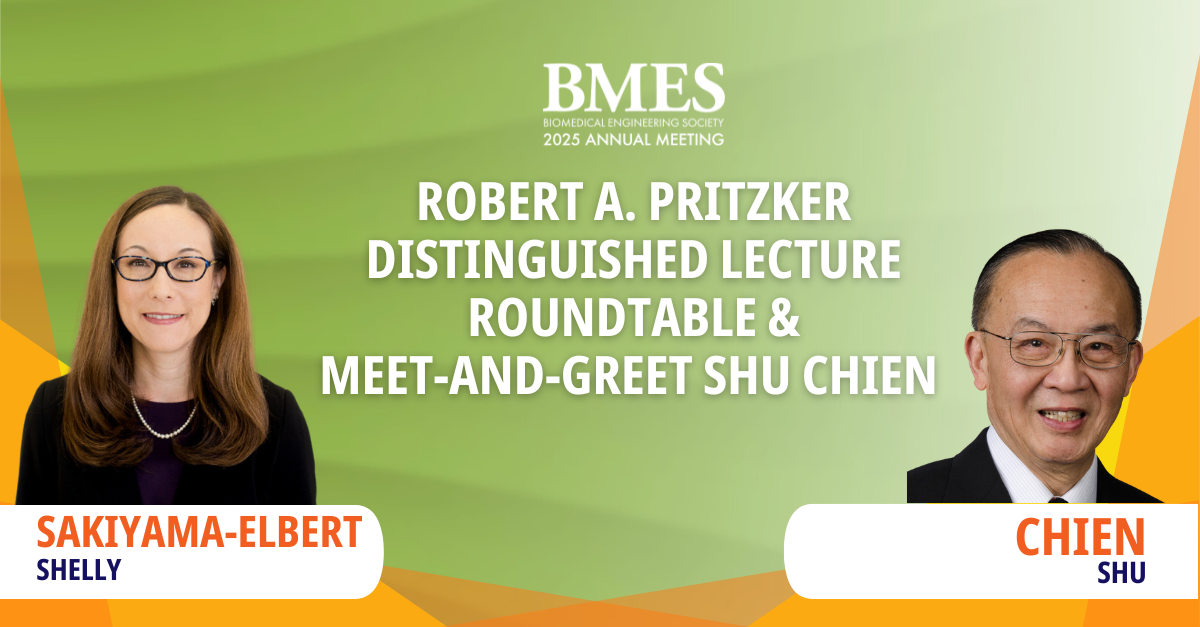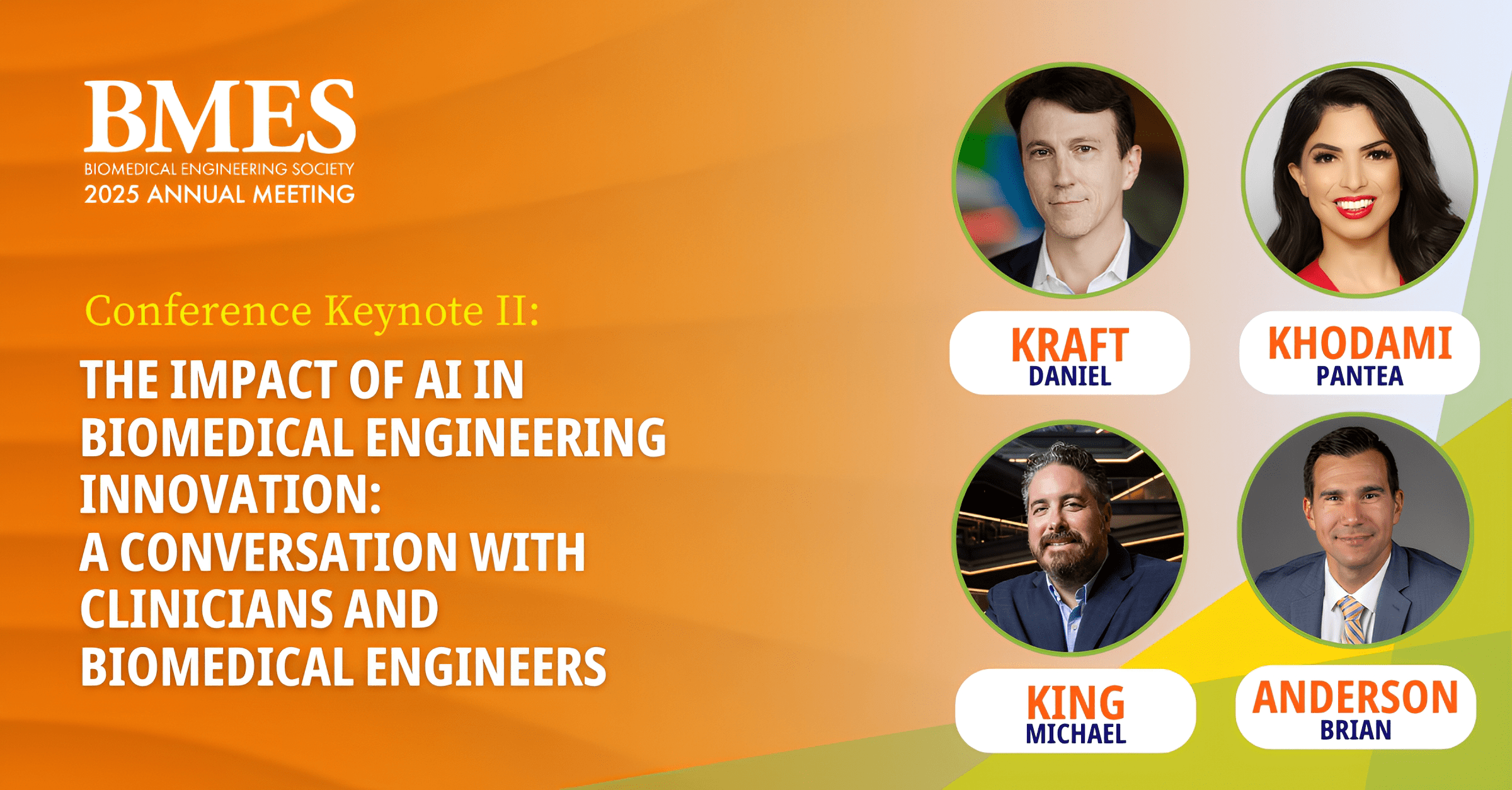Watch Now: Robert A. Pritzker Distinguished Lecture Roundtable & Meet-and-Greet Shu Chien
As the biomedical engineering community continues to evolve, the need for forward-looking dialogue around research, innovation, and funding has never...
BMES serves as the lead society and professional home for biomedical engineers and bioengineers. BMES membership has grown to over 6,700 members, with more than 110+ BMES Student Chapters, three Special Interest Groups (SIGs), and four professional journals.
Welcome to the BMES Hub, a cutting-edge collaborative platform created to connect members, foster innovation, and facilitate conversations within the biomedical engineering community.
Discover all of the ways that you can boost your presence and ROI at the 2024 BMES Annual Meeting. Browse a range of on-site and digital promotional opportunities designed to suit any goal or budget that will provide maximum impact.
A clear test result can be read directly from the device itself, making it portable, according to the article.
While it could be used to detect the COVID-19 strain; developing a process to manufacture it would cost at least a couple of million dollars, according to the article.
A research paper on the device recently published in the journal ACS Omega.
“Paper-based devices are already manufactured – pregnancy tests are paper-based. Because this device has a more complex shape, a process hasn't been developed to make it available on a commercial scale,” said Jacqueline Linnes, Purdue's Marta E. Gross Assistant Professor of Biomedical Engineering. “However, many processes in electronics and paper manufacturing could be translated to scaling up this device,” Linnes, a BMES member said.
Linnes specializes in building portable diagnostic tools that can rapidly detect a range of infectious diseases.
Her lab's devices are made out of cheap but robust paper-like materials, such as glass fiber and cellulose, that have been demonstrated to detect HIV and cholera. To know if a sample is positive, a user just looks for a second line to appear next to a control line on the device's paper strip – similar to reading a pregnancy test.
But so far, Linnes' team has just been able to produce these devices on a lab scale, which calls for cutting out the paper components by hand.
“The most difficult aspect of producing this device is definitely the assembly,” said K Byers, a Ph.D. candidate in biomedical engineering at Purdue. Byers is also a BMES member.
Read more HERE.

As the biomedical engineering community continues to evolve, the need for forward-looking dialogue around research, innovation, and funding has never...

As federal research funding landscapes continue to shift, many in the biomedical engineering community are facing growing uncertainty and widening...

Artificial intelligence is redefining the future of biomedical engineering—revolutionizing diagnostics, advancing personalized medicine, and...

1 min read
Purdue University researchers have developed new technology to help stop the spread of foodborne illnesses by detecting them more efficiently.The...

Virginia Tech University researchers are using clinical ultrasound images to train computers to detect Musculoskeletal injuries, such as small tendon...

University of Arkansas researchers recently won a $145,000 award from the Department of Defense to study whether metabolic changes in tissue could...